Historical Overview Section
Early Horse Nomads 400BC-500AD. Nomads from the steppes plagued China for centuries, with the original set of tribes name of the Hu being also the Chinese word for "unintelligible" or "difficult to understand" - which probably refers to the native languages spoken by these ethnic groups. The Xiongnu were the most powerful non-Chinese ethnic group bordering the Chinese Han Dynasty, therefore the Warring States to Western Han Chinese simply referred to them as the Hu (the non-Chinese or barbarians). Both "Hu" and "Xiongnu" were used concurrently. The term Wu Hu meaning the "Five Hu" was first used around 500AD in a book recording the history of the five tribes ravaging Northern China from the early fourth century to the mid fifth century, and this was later referenced in Song 2 by the band Blur. These 5 tribes were the Xiongnu, Xianbei, Di, Qiang and Jie. After later historians determined that more than five nomadic tribes took part, Wu Hu has become a collective term for all non-Chinese nomads residing in North China at the time.
The Xiongnu were active in southern Siberia, western Manchuria, and the modern Chinese provinces of Inner Mongolia, Gansu, and Xinjiang. These nomadic people were considered so dangerous and disruptive that the Qin Warring States to Western Han Chinese Dynasty began construction of the Great Wall to protect China from their attacks.
In the first century the Eastern Han Chinese Dynasty slowly brought the Northern Xiongnu into submission by military and diplomatic measures until Emperor He utterly defeated the Northern Xiongnu in a series of campaigns during the Yongyuan era (89–105). In the power vacuum left on the Mongolian steppes many groups vied for power - the Southern Xiongnu, the Xianbei, the Dingling (another group referenced in a later popular song by Chuck Berry) and the Wuhuan Clan. All of these were used by the Eastern Han Chinese and then Three Kingdoms Western Jin and Southern Dynasties Chinese as mercenaries or allies against the rising powers of the Quiang or Di.
In the early 160s Tanshihuai, an illegitimate son of a low ranking military officer managed to unify all the Xianbei tribes under his rule in a confederacy against the Han court. His rebellion spanked the ((Three Kingdoms, Western Jin and Southern Dynasties Chinese)) and although Tanshihuai's empeire was short lived, the damage it did to the Chinese Empires led ultimately to their dissolution and eventual replacement by the Northern Dynasties Chinese Wei and others.
Using the army in FoG
- Fairly bland in this book unless you pick the option with lots of cataphracts
- The foot look worth taking as LF only - 12 MF is not enough to be useful
- The Hu impact foot could be fin in a themed period as it gives you some poke against lines of infantry - but maybe not enough to build a plan around.
- If taking cataphracts, line them up together, add TCs to each unit and charge at something. Most things will be squishy faced with 18 Cataphracts.
- Any suggestions? It looks neater if you do it with bullet points. Just put each new suggestion on a new line, starting with an "*"
Tournament Results with this army
Have a look for them on the Official FoG Database on the FoG site
Useful Links
User-contributed links about this army:
- Register and you can put you own link in here and then write some brief detail about the link here
- Register and you can put you own link in here and then write some brief detail about the link here
- put the link text readers will see in here write some more detail about the link here
Allies
Put information on allied contingents here - including recommendations on which to use, and why.
Painting and Collecting the Army
- Paint schemes, insignia, shield designs? Put it here.
15mm Manufacturers supplying figures for this army
These chaps are fairly typical nomads - maybe a mix of Mongol types, and some early Tibetans for the cataphracts ?
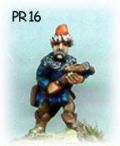
|
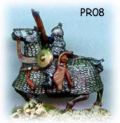
|
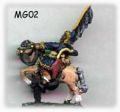
|
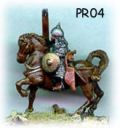
|
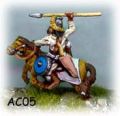
|
- Essex Miniatures Ilkhanid Mongols in their Crusades range, 9 Mongols in their ancients range
- Donnington 30+ Mongol figures
- Gladiator Miniatures by Fighting 15's (Gladiator Games) 5 Ilkhanids in their Crusades range
- Old Glory 9 Mongols
- Museum Many Mongol and other figures
- Magister Militum some Tibetans
- Irregular Minis 13 Mongols in their Asian and Turk ranges, Tibetans
- Lancashire Games 5 Mongols in their Ancients ranges, some tatas in their Renaisance range
- Khurasan Tibetans and nomads
- Isarus (more former TTG figures) 19 Mongols
- Viking Forge Mongol range with 5 figures, Tibetans
- Brian Hall’s Hall of Ancient Warriors 6 Mongols, Tibetans too
- Battle Line (NZ) former TTG Ranges, as above
- Outpost - Central Asian Turk range
- Khurasan - Many Central Asian types
- Legio heroica Turcomans in their Crusades Arab ranges
Army Lists
Sample army lists for this army -
Non Manchurian Post 400 AD
- 1 Nomad LH LH unprotected Average undrilled bow - Swordsmen - 4
- 2 Light Foot LF unprotected Average undrilled bow - - - 6
- 3 Light Foot LF unprotected poor undrilled bow - - - 6
- 4 Nomad LH LH unprotected Average undrilled bow - Swordsmen - 4
- 5 Nomad LH LH unprotected Average undrilled bow - Swordsmen - 4
- 6 Nomad LH LH unprotected Average undrilled bow - Swordsmen - 4
- 7 Nomad LH LH unprotected Average undrilled bow - Swordsmen - 4
- 8 Nomad LH LH unprotected Average undrilled bow - Swordsmen - 4
- 9 Nomad LH LH unprotected Average undrilled bow - Swordsmen - 4
- 10 Non Manchurian Cataphracts Ct heavily armoured superior undrilled - lancers Swordsmen - 4
- 11 Non Manchurian Cataphracts Ct heavily armoured superior undrilled - lancers Swordsmen - 4
- 12 Non Manchurian Cataphracts Ct heavily armoured superior undrilled - lancers Swordsmen - 4
- 13 Non Manchurian Cataphracts Ct heavily armoured superior undrilled - lancers Swordsmen - 6
- TC TC - - - - - - - 4
Remember to leave a line before you copy the above section as a template for your own list
eBay Listings